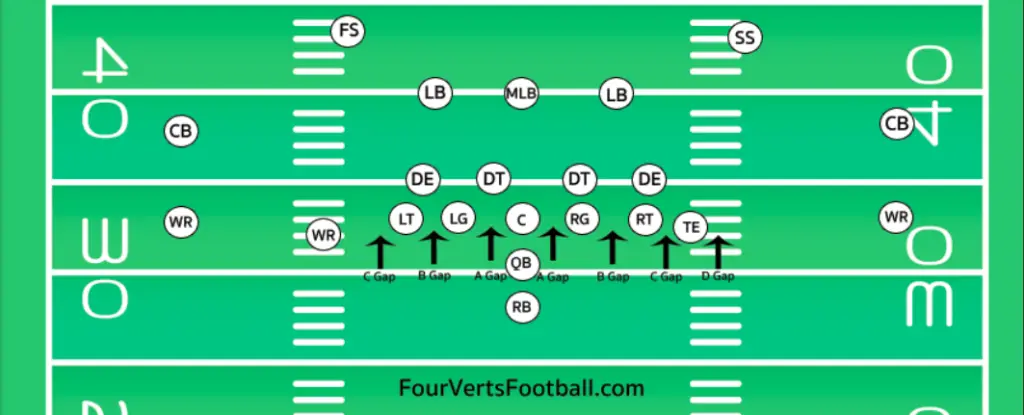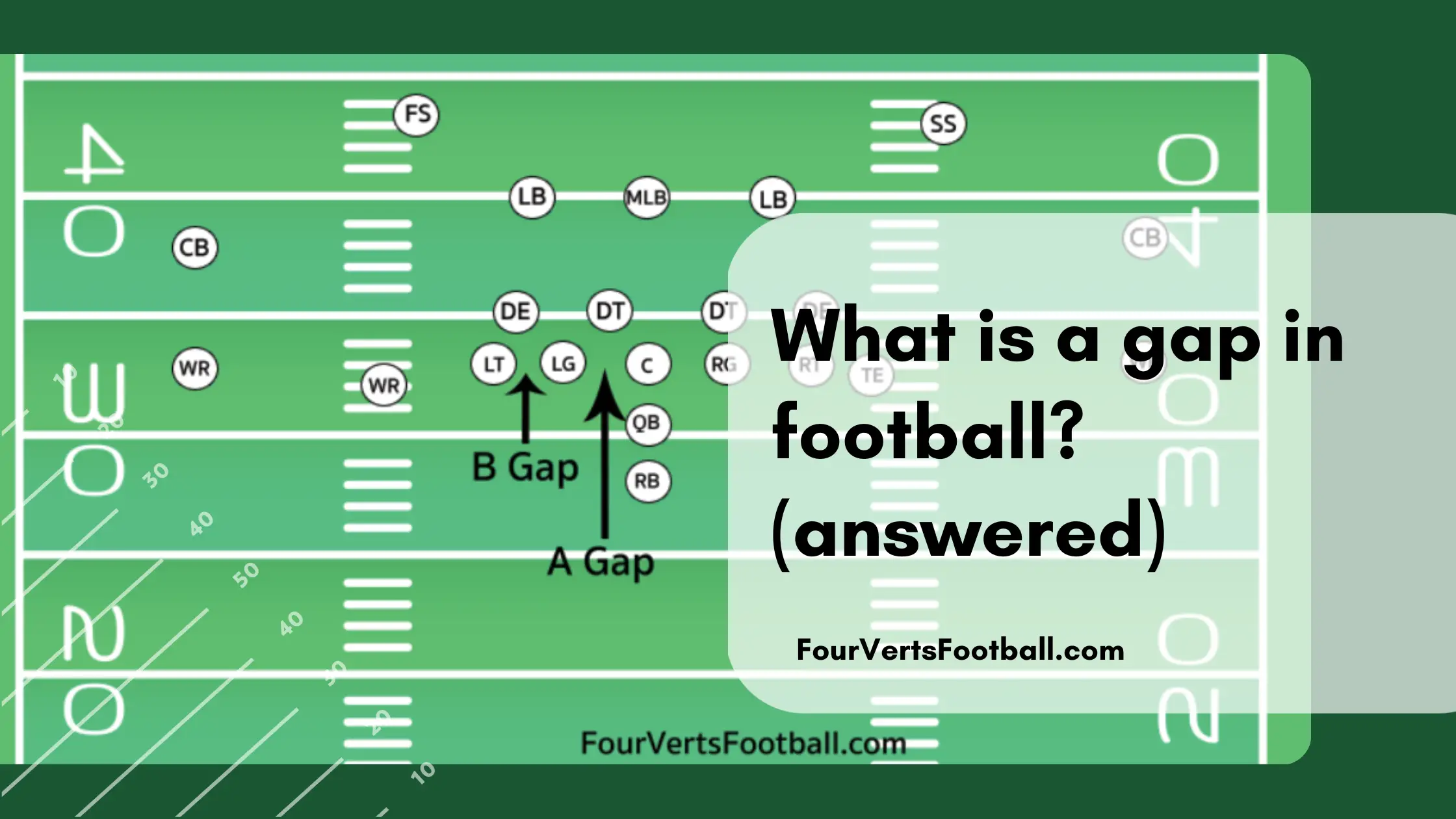The first time you hear confusing terms like a-gap or b-gap in football it can be a little overwhelming. Luckily gaps in football are quite easy to understand as we’ll show you in this guide.
A gap in football is a term used to describe the space between two offensive players. When you see letters like a, b, or c before the word gap this is simply a label used to describe which gap they are talking about.
Labelling each gap

Labelling of the gaps in football is a fairly straightforward process. It starts in the middle of the offensive line and moves in alphabetical order to the outside of the line.
The space between the center and the guard is the A gap. The space between the guard and tackle is the B gap. And the space outside the tackle is the C gap.
The gaps are also labelled the same on either side of the line. For example, the gap between the guard a and the tackle will be labelled as the b-gap on both sides.
When talking about gaps it usually refers to the spaces between the offensive lineman. These gaps are the a gap, b gap, and c gap.
Though when other players join the end of the line such as the tight end another gap is created.
This extra gap between the tackle and the tight end is called the d gap.
How are gaps used in football?
Now that we know how to label gaps in football you may be wondering how this terminology is used. Gaps are used both offensively and defensively when giving players assignments.
Offense
On the offensive side of the ball gaps are used for rushing plays. Each rushing play is going to have a gap in the offensive line in which they intend to run the ball.
All the blockers on the field will know this gap ahead of time and will look to create as much space as possible for the ball carrier.
For example, let’s say the run is supposed to go between the strongside guard and tackle. On this play, the guard and the tackle would both look to push the defenders in front of them away from this gap.
This way the ball carrier will have the space required to get through the defensive line without being tackled.
Oftentimes the offense will send a lead blocker through the gap first. This player will block any defenders waiting on the other end of the gap.
Defense
On the defensive side of the ball gaps play a role in both pass rushing and run-stopping.
Pash rushing in football refers to defensive players looking to tackle the quarterback before he throws the ball.
When pass-rushing defensive players will have a specific gap they are going to target to get to the quarterback. Defenders have several different methods of using gaps to beat a defense.
Players may perform a twist and exchange which gap they are targetting. If the offensive lineman tries to follow their defender they will find they have left their gap open.
This leaves room for the other defender to enter his new gap. Additionally, players will also try and overwhelm a gap by sending multiple players in that direction.
If an offensive lineman fails to identify which player is coming through his gap he will struggle to block them effectively.
Run stopping is also going to use gaps quite often in their defensive assignments. When stopping the run players will be expected to cover one or more gaps.
This means if the ball carrier attempts to run through their gap they must block or tackle them.
Some defenses will use a one-gap technique and others will use a two-gap. A one-gap defense relies on defenders covering a single gap each play.
A two-gap defense on the other hand is going to ask defenders to watch two gaps on each play.
In a one-gap defense defenders are able to play a much more aggressive style of defense. This is because these players don’t have to sit back and read the play.
Instead, they know the area they need to block and can run directly at it once they identify a rushing play is taking place.
A two gap defender on the other hand does not have this luxury. These players must wait and determine which of their two gaps the ball carrier is likely to go through.
If they choose the wrong gap the ball carrier will have an easy path through their hole.
Generally speaking, two-gap defenses use three defensive linemen which is why they must cover two separate gaps.
Teams which utilize a one gap system tend to use four defensive linemen. They will also have two or more linebackers filling in specific gaps in the offensive line as well.

